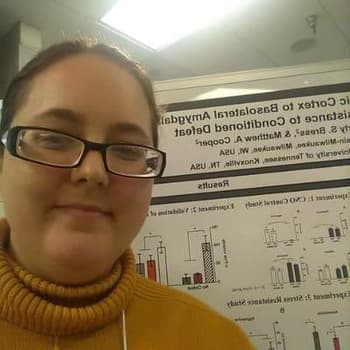Native American Substance Abuse Prevention Programs
Written by Thomas Christiansen
& Medically Reviewed by Dr. Brooke Dulka, PHD
Medically Reviewed
Up to Date
Last Updated - 6/17/2022
View our editorial policy
Native Americans, compared to other ethnic groups in the United States, have the highest rates of substance use disorders. While research suggests that Native Americans can be just as responsive to substance use treatment as other ethnic groups, specialized substance abuse prevention programs can address the specific needs of the Native American population.
Native American Substance Abuse Prevention Programs for Adults
Methamphetamine addiction is devastating in some Native American communities. Several programs for adults were developed to counter the rise of methamphetamine addiction. Knowing what each program offers can help people figure out what program may work best for themselves of a loved one.
Methamphetamine Suicide Prevention Initiative
Meth use in Native American communities is on the rise. One program designed to address this issue is the Methamphetamine Suicide Prevention Initiative (MSPI), a nationally-coordinated effort focused on providing methamphetamine and suicide prevention and intervention resources for Native Americans. The MSPI offers locations throughout the United States that include a mix of health centers, health stations, preventative health programs and urban programs that can help deter the rise of meth.
What’s unique about the Methamphetamine Suicide Prevention Initiative is that it approaches addiction and mental health from a community-driven context. This program typically works with Native American adults who are particularly at risk for suicide, in addition to substance abuse.
Meth360
Meth360 is a unique national educational program designed to deliver information about methamphetamine from a law enforcement, prevention and treatment perspective directly to the members of the community. As the name suggests, this program takes a “360-degree view” of the challenges surrounding meth addiction.
Native American Youth Substance Abuse Prevention Programs
Perhaps the best way to reduce substance abuse problems within these communities is to focus on Native American youth. Several prevention programs were developed with that goal in mind.
Model Adolescent Suicide Prevention Program
The Model Adolescent Suicide Prevention Program (MASPP) program for Native American youth is a suicide prevention and intervention program. MASPP works through community education about suicide. It also focuses on related issues, such as child abuse, neglect, family violence, trauma, and substance abuse. Native Americans are more at risk for suicide than any other ethnic group. Suicide is the second leading cause of death among Native American youth at 2.5 times higher than the national youth suicide rate.
The high rates of Native American youth suicide created a great need for programs such as MASPP. This program emphasizes community involvement and culturally framed public health approaches. It is also a promising program because of the depth of involvement, from school-based suicide prevention curriculums and community education clinical services to extensive outreach provided through a variety of places, programs and community events.
Project Venture
Project Venture is a program for at risk Native American youth. It is a year-round program, with in-school and out-of-school programming for building resiliency, leadership, and community involvement. Project Venture was implemented in over 25 states, as well as several Canadian provinces. In 2004, the Substance Abuse and Mental Health Services Administration Center for Substance Abuse Prevention awarded Project Venture “Model Program Status” based on consistent outstanding evaluation data over the course of several years. The project demonstrated a reduction in alcohol and drug use in youths who participated in Project Venture.
Gathering of Native Americans
The Gathering of Native Americans (GONA) is a culture-based planning process where community members gather to address community-identified issues, such as substance abuse. The goal of GONA is to empower Native Americans and provide a source of cultural identity. To do this, they focus on four themes: belonging, mastery, interdependence and generosity. One aspect of GONA is a three-day Native American substance abuse prevention program for youth that is based on the four core principles. Through a cultural-based intervention approach, GONA has been positively impacting the lives of Native American youth since it was developed in 1992.
Substance Abuse Statistics Within the Native American Community
Patterns of substance abuse in Native American populations are complex and vary across cultural groups. Substances like alcohol and meth are problematic. For example, Native Americans who seek substance abuse treatment are more likely than any other ethinic groups to report alcohol abuse. Native Americans are also more likely to engage in binge drinking than any other ethnicity. Native American youth (ages 12 to 17) have the highest rate of alcohol use of all ethnic groups, and 20% of Native American youth engage in underage drinking.
Notably, substance abuse prevention programs have been shown to decrease the prevalence of addiction. This is particularly true when youth are the focus of these prevention programs and when community and culture are emphasized.
Where to Find Help for Treating Substance Abuse in Washington
There are many substance abuse treatment centers to choose from. Each treatment facility may use different treatment methods. So, depending on what your specific needs are, you can choose a program that works best for you or your loved one.
Contact The Recovery Village Ridgefield to speak with a representative about how professional addiction treatment can help you or a loved one address a substance use disorder. Take the first step toward a healthier future, call today.
Sources
Substance Abuse and Mental Health Services Administration. “SAMHSA American Indian/Alaska Native Data.” Accessed September 13, 2019.
Dickerson, Danielle; et al. “American indians/alaska natives and substance abuse treatment outcomes: positive signs and continuing challenges.” Journal of Addictive Diseases, January. 2011. Accessed September 13, 2019.
Spear, Suzanne; et al. “The rise in methamphetamine use among American Indians in Los Angeles County.” American Indian and Alaska Native Mental Health Research: The Journal of the National Center, 2007. Accessed September 13, 2019.
Leavitt, Rachel; et al. “Suicides Among American Indian/Alaska Natives — National Violent Death Reporting System, 18 States, 2003–2014.” MMWR Morbidity and Mortality Weekly Report, 2018. Accessed September 13, 2019.
Substance Abuse and Mental Health Services Administration. “American Indian and Alaska Native Substance Abuse Treatment Admissions Are More Likely Than Other Admissions to Report Alcohol Abuse.” The TEDS Report, November 18, 2014. Accessed September 13, 2019.
Indian Health Service. “Methamphetamine and Suicide Prevention Initiative (MSPI).” Accessed September 20, 2019.
Prevention Means Progress. “Meth 360.” Accessed September 20, 2019.
Suicide Prevention Resource Center. “Model Adolescent Suicide Prevention Program (MASPP).” 2012. Accessed September 20, 2019.
“Project Venture.” Accessed September 20, 2019.
National Indian Health Board. “Project Venture.” Accessed September 20, 2019.
View Sources
Substance Abuse and Mental Health Services Administration. “SAMHSA American Indian/Alaska Native Data.” Accessed September 13, 2019.
Dickerson, Danielle; et al. “American indians/alaska natives and substance abuse treatment outcomes: positive signs and continuing challenges.” Journal of Addictive Diseases, January. 2011. Accessed September 13, 2019.
Spear, Suzanne; et al. “The rise in methamphetamine use among American Indians in Los Angeles County.” American Indian and Alaska Native Mental Health Research: The Journal of the National Center, 2007. Accessed September 13, 2019.
Leavitt, Rachel; et al. “Suicides Among American Indian/Alaska Natives — National Violent Death Reporting System, 18 States, 2003–2014.” MMWR Morbidity and Mortality Weekly Report, 2018. Accessed September 13, 2019.
Substance Abuse and Mental Health Services Administration. “American Indian and Alaska Native Substance Abuse Treatment Admissions Are More Likely Than Other Admissions to Report Alcohol Abuse.” The TEDS Report, November 18, 2014. Accessed September 13, 2019.
Indian Health Service. “Methamphetamine and Suicide Prevention Initiative (MSPI).” Accessed September 20, 2019.
Prevention Means Progress. “Meth 360.” Accessed September 20, 2019.
Suicide Prevention Resource Center. “Model Adolescent Suicide Prevention Program (MASPP).” 2012. Accessed September 20, 2019.
“Project Venture.” Accessed September 20, 2019.
National Indian Health Board. “Project Venture.” Accessed September 20, 2019.
Authorship






